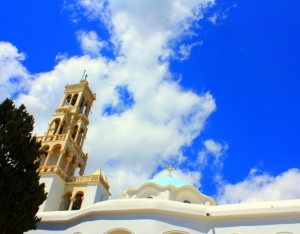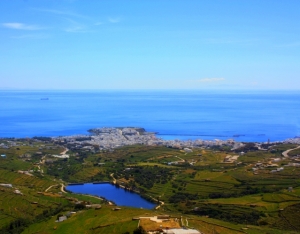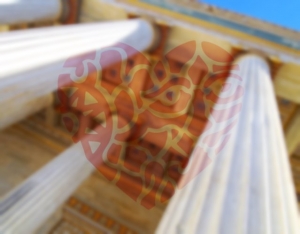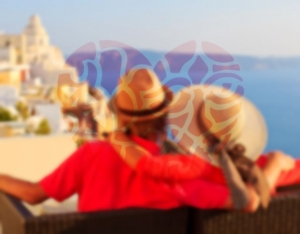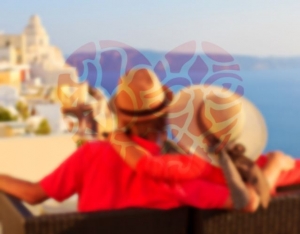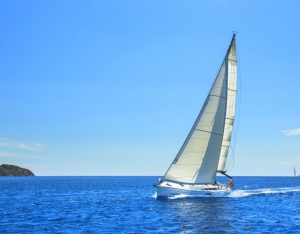Thodoris Bgenopoulos
Tinos is a very special island. The majority of visitors stop in Chora and Our Lady of Tinos, but the island has a lot more... In the hinterland you will find hidden treasures, namely its beautiful picturesque villages.
Besides Pyrgos, in the northern part of the island you will find Isternia, Kardiani, Platia and Venardado. Each of them has its own characteristic, yet they all share the extraordinary energy and wild beauty of Tinos that cannot be tamed or labeled.
In the southern part of the island, called by the locals "Kato Meri" (Lower Parts), you will find most villages each with its own special feature. Volax stands out with its impressive, lunar-like landscape, together with Kambos, where there is Tsoklis museum. The now deserted Loutra village is also interesting, hosting the School of Ursulines.
And these are just a sample. Aetofolia (=Eagle Nest), Kalloni, Komi, Perastra, Smardakito, Tarampados, Hatzirados, Arnados, Falatados, Xinara, Krokos(=Saffron), Agapi (=Love) and many many more villages wait for you to discover their remarkable hidden beauties. If you happen to visit Tinos, it is worth exploring the picturesque villages of the island either with your own vehicle or on foot (if you can handle hiking). Tinos island is a lot more than religion and the lovely villages are living proof!
Pyrgos is in the northern part of Tinos.
Meaning "Tower", it is the biggest village of the island at a 25 km distance from Chora. Pyrgos is a beautiful traditional village with gorgeous houses and sculptures, which pop up at every corner as if it is open-air museum. Birthplace of the leading sculptor Giannoulis Halepas and the painter Nikiforos Lytras, Pyrgos is a village deeply linked with art. Wander in its narrow alleys, visit the Panormos Artists' Museum, the Giannoulis Halepas Museum and the Museum of Marble Crafts.
Upon arriving in Tinos by boat, the first you see is Chora, the capital and port of the island.
Unavoidably, the religious character dominates in Chora and Evaggelistria Church, the world-famous Lady of Tinos, is the main attraction. Following the footsteps of thousands of visitors, go up the avenue that will lead you to the temple where the famous miraculous Christian icon is held. Take your time to explore the Church but do not limit yourself to this very important attraction, as there are a lot more to see and do in Tinos. Get lost in the narrow streets and discover the island's hidden beauties and marble sculptures. Especially if you are a fun of architecture, you will be amazed by the several spots decorated my marble sculptures or syntheses including taps and fountains, homes and walls. Do not miss the Archaeological Museum of Tinos and the interesting shopping area where you can buy handcrafted items and souvenirs of all kinds.
Regarding the usual holidays requirements and expectations (accommodation, food, drink), in Chora you will find excellent hotels and guest houses, restaurants, taverns, cafes and bars to satisfy our every need.
Findings indicate that Tinos had already been inhabited since prehistoric times. The Carians are considered to be its first settlers coming from Asia Minor with Tino as their leader, from whom the island took its name.
During the Classical Age, the capital city was located near the sea, in the wider region of what we know today as Chora. The Sanctuary of Poseidon in Kionia was an important religious center until the 3rd century BC.
Yet, little is known about Tinos until 1200. By then, the remaining residents had moved inland to avoid the frequent pirate raids. In 1207 the island passed to the Venetians. It is then that Gkizi brothers assumed the island's governance, built a castle in Exomvourgo and Tinos begins to live better and certainly safer days. The castle remained impregnable until 1715 when the island was occupied by the Turks. Following on, Exomvourgo was deserted and the capital transferred to Chora, where it is until today.
In 1821, Tinos rised up together with the rest of Greece against the Ottoman Empire and Pyrgos village was the first in this initiative. The Icon of the Immaculate Conception that was miraculously discovered on the island was considered to be a divine sign thereby raising the Greek morale during the Revolution. Faithful people from all over Greece and Greeks abroad made donations for the construction of the Church of Evangelistria, better known as Lady of Tinos. Since then, the island's history is intertwined with the Lady of Tinos.
Shortly before the outbreak of the Greek-Italian war in mid-August 1940, an Italian submarine torpedoed at the port of Tinos the warship "Elli" that was taking part in the celebrations for the Assumption.
Tinos is the fourth largest island in the Cyclades with an area of nearly 195 square kilometers. It is called the "sacred island of the Cyclades" as here is the Holy Temple of Evaggelistria, the famous Lady of Tinos. Every year thousands of people visit the island to admire or worship the Icon, which according to Christian tradition performs miracles, and/or fulfill a vow.
Apart from the great religious tourism, Tinos gathers many visitors who choose this beautiful Cycladic island to spend their holidays. Wonderful beaches, picturesque villages and unique attractions await once you arrive in Tinos. After the must-visit to Our Lady of Tinos, its time for the rest attractions of the island. Visit the Sanctuary of Poseidon and the castle in Exomvourgo, where once the capital of the island was. Discover the interesting museums of the island, including the Archaeological Museum of Tinos, the Museum of Marble Crafts, the Museum of Panormos’ Artists and the Giannoulis Halepas Museum, where the leading sculptor was born.
Marble is a key feature of the island. Tinian marble carved with great art will be found almost everywhere. You will stumble upon marble fountains, engravings in homes and of course several works of art not only in museums but also scattered around the island. That is why Tinos is characterized by many as an "open air museum".
Tinos is a lovely mountainous island and its highest point is the Tsiknias at approximately 730 meters. Wandering around the island, you will discover villages with interesting architecture, marble decorations and many (many indeed) impressive pigeonniers (peristeriones). Follow the paths leading to breathtaking landscapes and experience unique moments of joy and spirituality that only an island like Tinos can offer.
In Agios Efstratios you will find the museum of Democracy.
It is a small tribute to those who spent months or years of their lives exiled, due to their ideas, in Agios Efstratios.
The building that houses the museum was originally the first school on the island. Once Agios Efstratios became an exile-place, it served as a convalescent. The earthquake of 1968 caused serious damage to the building, which was then abandoned. Its renovation begun in 2005, aiming to host the museum of Democracy, which finally opened in 2007.
Since then, it provides visitors with the chance to learn about the history of the island as a place of exile for political prisoners and their living conditions, through a series of photographs, texts and relics.
If you happen to be in Agios Efstratios, a visit to the museum of the Democracy is a must; above all it is a reminder so as to never forget the true values of life and stay away from divisions and conflicts.
More information about the Museum of Democracy in Agios Efstratios can be found at www.mouseiodimokratias.gr.
The monument of Nikolaos Sialmas is at the southernmost tip of Agios Efstratios.
The monument was erected in memory of the heroic Air Force Lieutenant Nikolaos Sialmas, who lost his life defending the Greek airspace. The Mirage aircraft of the heroic Greek man crashed in an area south of Agios Efstratios on June 18, 1992.
To commemorate his sacrifice, this memorial was built at Tripiti, the southern cape of Agios Efstratios, which has since been renamed to Cape Nikolaos Sialmas.
The monument is visible from a great height and carries the famous dictum of Leonidas " Molon lave ", a phrase that since antiquity inspires and exemplifies all Greeks who defend their country. It also features a shield and a spear which are the emblem of the unit in which the heroic lieutenant belonged.
The cave of Agios Efstratios is in the eastern part of the island, near Alonitsi beach.
This cave is not particularly known for its geological features, but for its grave historical and religious importance. Here is where Hosios Efstratios the Miraculous found refuge and became a hermit , after being banished and chased during the Iconoclasm in Byzantium. In the prevailing version, the island owes its present name to Hosios Efstratios. Today in the cave you will see icons of Hosios Efstratios and candles that are constantly lit.
The activities in Agios Efstratios may be limited, but the quality is extremely high.
Especially if you have a boat (owned or rented) there are several options open before you. Each beach and cove in Agios Efstratios is an ideal destination for swimming. The crystal clear waters and the peaceful atmosphere are exactly what a swimmer wishes for.
Of course you can also fish. Agios Efstratios is considered a top fishing spot by those who know. Either from land line, rod or fishing boat, one thing is sure: that the fish will be more than good. If you happen to be a more extreme-type, diving is your thing in this island. The virgin depths of Agios Efstratios, combined with several caves wait to be explored. And if you combine it with spearfishing, you will be a double winner!
Alonitsi beach is in the northeastern part of Agios Efstratios.
Like any other beach in Agios Efstratios, this too is characterized by golden sand, crystal clear waters and a unique tranquility. Everything you need in order to enjoy a fantastic day by the beach!




